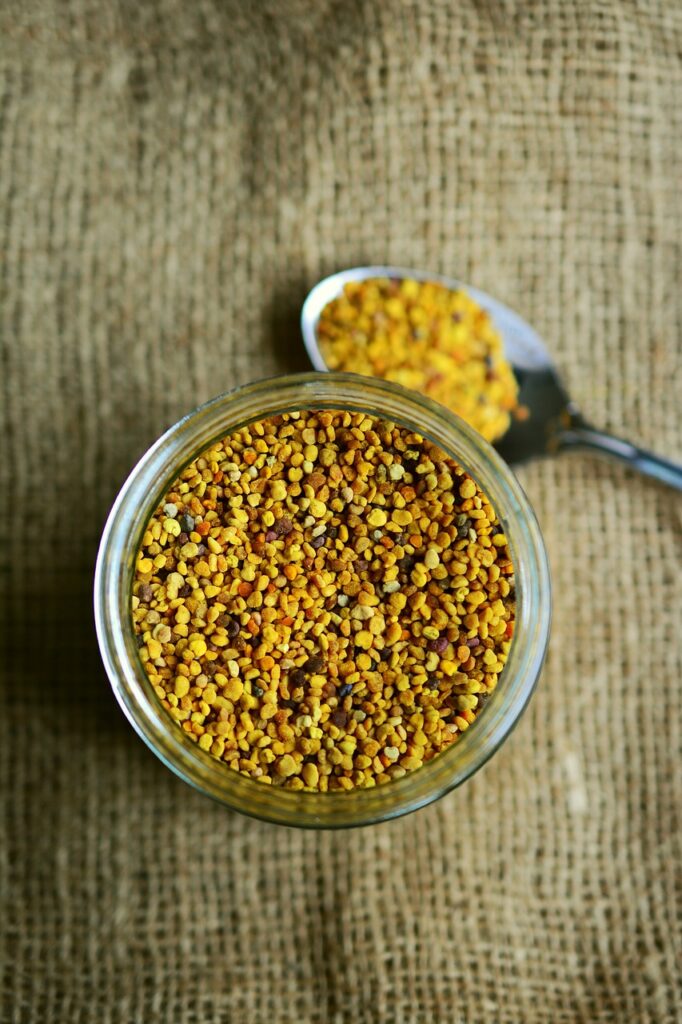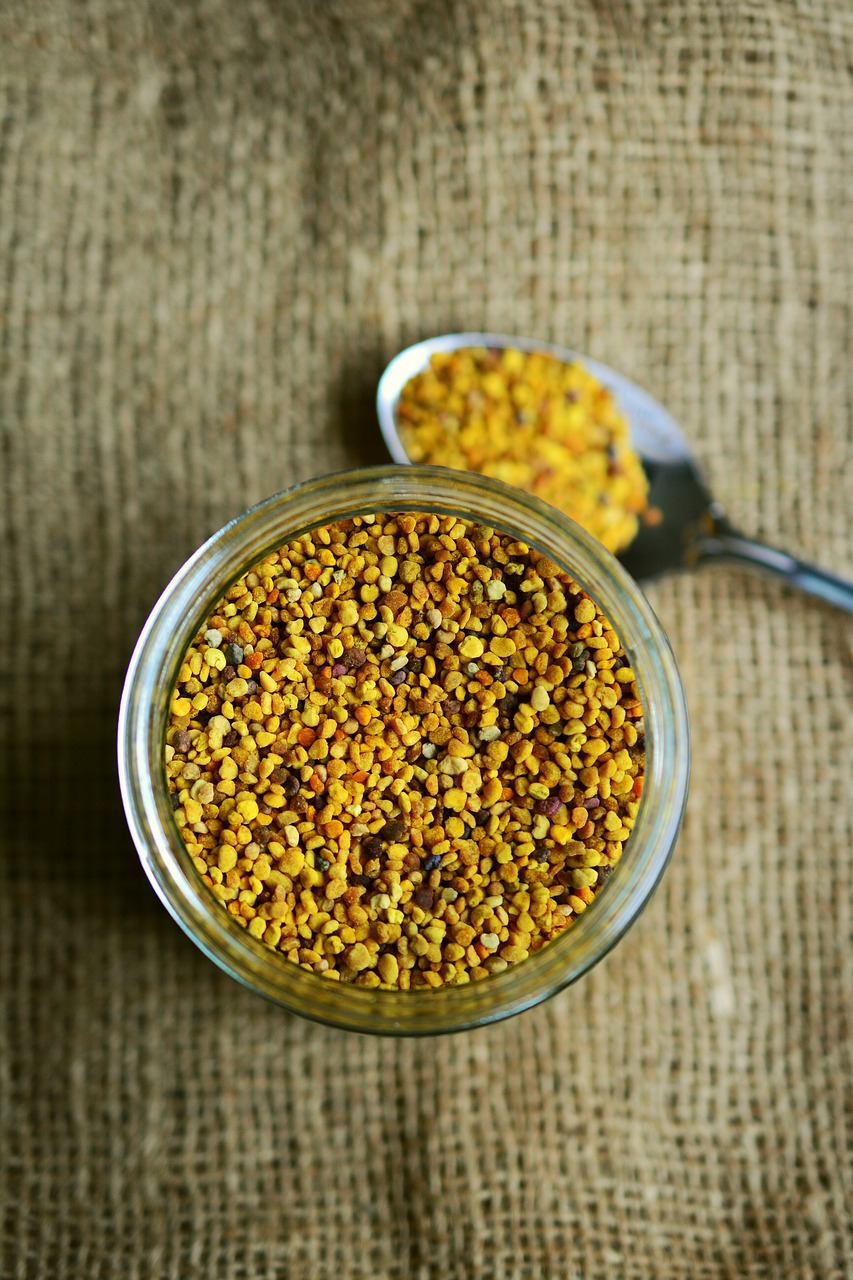In this article, you will discover the top ways to naturally relieve muscle pain. Whether you’ve overexerted yourself during a workout or suffer from chronic muscle discomfort, these simple yet effective strategies will help ease your pain without relying on medications. From gentle stretches and warm baths to incorporating anti-inflammatory foods into your diet, these natural remedies will provide you with the relief you need to get back to living life fully and comfortably. Say goodbye to muscle pain, naturally!
Hot and Cold Therapy
Hot Compress
Using a hot compress is a simple yet effective way to alleviate muscle pain. The heat helps to increase blood flow, relax tense muscles, and reduce inflammation. To apply a hot compress, fill a heat-safe container with hot water and soak a towel in it. Wring out the excess water and place the warm towel on the affected area for about 15-20 minutes. This can be repeated several times a day as needed.
Cold Pack
A cold pack can also provide relief for muscle pain. The cold temperature helps to reduce swelling, numb the area, and alleviate pain. To make a cold pack, wrap a few ice cubes in a thin towel or place frozen vegetables in a plastic bag. Apply the cold pack to the affected area for about 10-15 minutes, taking short breaks in between if needed. Be careful not to apply ice directly to the skin to avoid frostbite.
Contrast Therapy
Contrast therapy involves alternating between hot and cold treatments to stimulate blood flow and reduce inflammation. This can be particularly beneficial for muscle pain caused by injuries or overexertion. Start by applying a hot compress to the affected area for 3-5 minutes, then switch to a cold pack for 1-2 minutes. Repeat this cycle 3 or 4 times, always ending with a cold treatment. This contrast therapy can be performed once or twice a day, depending on the severity of the muscle pain.
Stretching Exercises
Neck Stretches
Neck stretches are especially helpful for relieving muscle tension and pain in the neck and upper back area. Gently tilt your head to one side, bringing your ear towards your shoulder, and hold the stretch for about 30 seconds. Repeat on the other side. You can also try the chin-to-chest stretch by slowly lowering your chin towards your chest and holding for the same duration. These stretches can be repeated multiple times throughout the day to provide relief.
Shoulder Stretches
If you’re experiencing muscle pain in your shoulders, stretching exercises can offer some relief. Begin with a basic shoulder roll, where you slowly rotate your shoulders in a circular motion several times in each direction. Another effective stretch is the cross-arm stretch. Extend one arm across your chest and use your other arm to gently pull it closer to your body. Hold for 15-20 seconds and repeat on the other side. These stretches can be performed regularly to alleviate shoulder muscle pain.
Back Stretches
Back stretches can help relieve muscle pain in the lower back and promote flexibility. The cat-camel stretch is a popular choice. Start on all fours, arch your back upwards like a cat, and then slowly lower your spine downwards, creating a concave shape like a camel. Repeat this movement for several repetitions. Another great stretch for the lower back is the knee-to-chest stretch. Lie on your back, bring one knee towards your chest, and hold it with both hands. Hold for 20-30 seconds and switch sides. These stretches are beneficial in reducing muscle pain and improving the overall health of your back.
Hamstring Stretches
Tight hamstrings can contribute to muscle pain, especially in the legs and lower back. To stretch your hamstrings, sit on the edge of a chair and extend one leg straight out in front of you. Lean forward slightly from your hips, keeping your back straight, and reach for your toes. Hold the stretch for 15-20 seconds and repeat on the other leg. Another effective hamstring stretch is the standing hamstring stretch. Stand with one foot elevated on a stool or step, keeping your leg straight. Gently lean forward until you feel a mild stretch in the back of your thigh. Hold for 20-30 seconds and switch legs. These stretches can provide relief from muscle pain caused by tight hamstrings.
Quadriceps Stretches
Stretching your quadriceps can alleviate muscle pain in your thighs and knees. A simple quad stretch can be performed by standing upright, grabbing your ankle or foot behind you, and gently pulling it towards your glutes. Hold the stretch for 20-30 seconds and repeat on the other leg. To do a more advanced quad stretch, lie on your side, bend your top knee, and grab your ankle or foot behind you. Gently pull it towards your glutes and hold for the same duration. These stretches can help reduce muscle pain and improve flexibility in the quadriceps.

Epsom Salt Bath
Preparing the Bath
An Epsom salt bath can provide soothing relief for muscle pain. Start by filling your bathtub with warm water. Add 1-2 cups of Epsom salt to the water and stir until it dissolves. You can also enhance the bath by adding a few drops of essential oils for a pleasant scent and potential additional benefits. Make sure the water temperature is comfortable and adjust as needed.
Soaking in the Bath
Once the bath is ready, immerse yourself in the water and allow yourself to relax for at least 15-20 minutes. The Epsom salt helps to relax the muscles, ease tension, and promote overall relaxation. During the soak, you can also perform gentle stretching exercises to further alleviate muscle pain. Take deep breaths, unwind, and let the warm water work its magic on your muscles.
Additional Tips
After the Epsom salt bath, dry your body gently and apply a moisturizer to keep your skin hydrated. It’s also important to drink plenty of water after the bath to stay hydrated and assist in the detoxification process. Remember to rinse the bathtub thoroughly to remove any residue. If you have any specific health concerns or skin conditions, consult with a healthcare professional before incorporating Epsom salt baths into your muscle pain relief routine.
Massage
Self-Massage
Self-massage can be a fantastic way to relieve muscle pain and increase blood circulation. You can use your hands or special massage tools, such as foam rollers or massage balls, to target specific areas. Apply gentle pressure and knead the muscles in a circular or back-and-forth motion. Focus on the areas experiencing pain or tension and gradually increase the pressure as tolerated. Self-massage can be performed daily or as needed to alleviate muscle discomfort.
Professional Massage
Seeking a professional massage can offer even greater benefits for muscle pain relief. Trained massage therapists are skilled at targeting specific muscles and employing various techniques to address muscle tension and pain. Choose a massage therapist who specializes in treating muscle pain and communicate your specific concerns and needs. A professional massage can provide immediate relief, improve circulation, and reduce muscle soreness.
Benefits of Massage
Massage offers numerous benefits for muscle pain relief. It helps to relax tense muscles, increase range of motion, and stimulate the release of endorphins, which are natural pain relievers. Massage also improves blood flow, decreases inflammation, and promotes a sense of overall well-being. Whether you opt for self-massage or seek the expertise of a professional, regular massage sessions can significantly alleviate muscle pain and enhance your physical and mental health.

Essential Oils
Lavender Oil
Lavender oil is well-known for its calming properties and can help reduce muscle pain and tension. It can be applied topically by diluting a few drops in a carrier oil, such as coconut oil or sweet almond oil, and massaging it into the affected area. Lavender oil can also be added to a warm bath or diffused in the air for aromatherapy benefits.
Peppermint Oil
Peppermint oil has a cooling effect and is often used for muscle pain relief. It contains menthol, which provides a soothing and numbing sensation. Dilute a few drops of peppermint oil in a carrier oil and apply it to the affected area. Avoid using it near the eyes or on broken skin. Peppermint oil can also be diffused or inhaled for its invigorating scent.
Eucalyptus Oil
Eucalyptus oil has anti-inflammatory and analgesic properties, making it a popular choice for muscle pain relief. Mix a few drops of eucalyptus oil with a carrier oil and massage it into the affected muscles. The cooling sensation can provide immediate relief. For additional benefits, you can also add eucalyptus oil to a warm bath or use it in a diffuser to enjoy its fresh scent.
Chamomile Oil
Chamomile oil is known for its calming and anti-inflammatory properties. Dilute a few drops of chamomile oil in a carrier oil and gently massage it into the muscles. Chamomile oil can help reduce muscle pain and promote relaxation. It can also be diffused or inhaled for its soothing scent, which can have a positive impact on your mood.
Rosemary Oil
Rosemary oil has analgesic properties and can be used to relieve muscle pain and soreness. Mix a few drops of rosemary oil with a carrier oil and massage it onto the affected area. Rosemary oil may also improve circulation and reduce inflammation. The invigorating scent of rosemary oil can also help uplift your mood and promote mental clarity.
Herbal Remedies
Turmeric
Turmeric is a bright yellow spice that contains a compound called curcumin, which has powerful anti-inflammatory properties. It can help alleviate muscle pain, reduce swelling, and enhance joint mobility. You can incorporate turmeric into your diet by adding it to various dishes or enjoying it as a golden milk latte. Alternatively, turmeric supplements are available for convenient consumption.
Ginger
Ginger is known for its anti-inflammatory and pain-relieving properties. It contains compounds called gingerol, which have been shown to reduce muscle pain and inflammation. You can enjoy ginger by adding it to tea, incorporating it into your meals, or taking ginger supplements. Ginger can provide natural relief for muscle pain and improve overall well-being.
Arnica
Arnica is a medicinal herb commonly used for treating bruises, sprains, and muscle pain. It has anti-inflammatory properties and can help reduce swelling and alleviate discomfort. Arnica can be applied topically in the form of creams, ointments, or gels. Follow the instructions on the packaging and be cautious about using arnica on broken skin.
Devil’s Claw
Devil’s claw is a plant native to Africa and has been traditionally used to relieve various types of pain, including muscle pain. It contains compounds called iridoid glycosides, which have anti-inflammatory and analgesic effects. Devil’s claw can be taken as a supplement in capsule or tablet form. As with any herbal remedy, consult with a healthcare professional before use.
White Willow Bark
White willow bark is the natural source of salicylic acid, the active ingredient in aspirin. It has been used for centuries as a natural remedy for pain and inflammation. White willow bark is available in various forms, including capsules, tablets, or as a tea. It can provide relief for muscle pain and is often used for conditions such as arthritis. Consult with a healthcare professional before incorporating white willow bark into your muscle pain relief routine.

Hydration and Nutrition
Importance of Hydration
Staying hydrated is crucial for overall health and can also play a significant role in muscle pain relief. Drinking an adequate amount of water helps to keep your muscles and joints lubricated, which can reduce muscle stiffness and promote flexibility. Aim to drink at least 8 glasses of water per day and increase your intake if you’re physically active or in a hot climate.
Anti-Inflammatory Foods
Incorporating anti-inflammatory foods into your diet can contribute to muscle pain relief. Foods such as blueberries, fatty fish (like salmon and sardines), leafy green vegetables, ginger, and turmeric have anti-inflammatory properties. By consuming a balanced diet rich in these foods, you can potentially reduce inflammation and alleviate muscle pain naturally.
Vitamin D and Magnesium
Vitamin D and magnesium are essential nutrients that play a vital role in maintaining muscle health. Vitamin D helps with calcium absorption, which is necessary for muscle function. You can get vitamin D from sunlight exposure or through supplements. Magnesium, on the other hand, relaxes muscles and helps reduce muscle cramping. It can be found in foods such as almonds, spinach, and black beans, or taken as a supplement.
Omega-3 Fatty Acids
Omega-3 fatty acids are known for their anti-inflammatory properties and can help reduce muscle pain. Incorporate foods rich in omega-3 fatty acids into your diet, such as fatty fish, flaxseeds, chia seeds, and walnuts. Alternatively, omega-3 supplements are available for those who may have difficulties obtaining enough through their diet. Omega-3 fatty acids can contribute to overall muscle health and provide relief for muscle pain.
Rest and Sleep
Allowing Sufficient Rest
Giving your body sufficient rest is important for muscle recovery and pain relief. Avoid overexertion and listen to your body’s signals when it needs a break. Incorporate rest periods into your daily routine and make sure to take breaks during physical activities. If you’re experiencing muscle pain, it’s crucial to avoid activities that exacerbate the pain and allow your body ample time to heal.
Quality Sleep Tips
Getting quality sleep is vital for muscle health and pain relief. Establish a regular sleep schedule and aim for 7-9 hours of sleep each night. Create a relaxing bedtime routine, avoid electronics before bed, and ensure your sleep environment is comfortable, cool, and dark. If muscle pain disrupts your sleep, try using a supportive pillow or mattress, and consider using heat or cold therapy before bed to ease any discomfort.
Yoga and Meditation
Yoga Poses for Muscle Pain Relief
Yoga can be a great way to alleviate muscle pain and improve flexibility. Certain poses can stretch and strengthen muscles, reducing tension and promoting relaxation. Some beneficial yoga poses for muscle pain relief include Child’s Pose, Cat-Cow Pose, Downward-Facing Dog, and Cobra Pose. Attend a yoga class or follow along with online tutorials to learn proper alignment and technique for optimal results.
Breathing Exercises
Deep breathing exercises can help relax muscles and reduce muscle pain. Practice diaphragmatic breathing by inhaling deeply through your nose, allowing your belly to rise, and exhaling slowly through your mouth. Focus on your breath and let go of any tension or discomfort in your muscles. You can perform breathing exercises anytime, anywhere, as a quick and effective way to relieve muscle pain.
Mindfulness Meditation
Mindfulness meditation involves directing your attention to the present moment and accepting it without judgment. This practice can help manage stress, reduce muscle tension, and alleviate pain. Find a quiet space, sit comfortably, close your eyes, and simply observe your thoughts and sensations without trying to change them. Start with just a few minutes each day and gradually increase the duration as you become more comfortable with the practice.
Acupuncture
How Acupuncture Works
Acupuncture is an ancient Chinese practice that involves inserting thin needles into specific points on the body. It is believed to stimulate the flow of energy, or qi, and restore balance to the body. Acupuncture can help relieve muscle pain by promoting the release of endorphins, reducing inflammation, and improving blood circulation. The insertion of needles is generally painless and often leaves individuals feeling relaxed and rejuvenated.
Finding a Qualified Practitioner
When considering acupuncture for muscle pain relief, it’s essential to seek a qualified practitioner. Look for a licensed acupuncturist who has undergone proper training and certification. You can ask for recommendations from friends, family, or healthcare professionals, or consult professional acupuncture organizations for accredited practitioners in your area. Choose a practitioner who makes you feel comfortable and explains the treatment process thoroughly.
Benefits of Acupuncture
Acupuncture offers a range of benefits for muscle pain relief. In addition to alleviating pain, it can help reduce muscle tension, enhance range of motion, and improve overall well-being. Acupuncture sessions are tailored to individual needs, and the treatment plan may vary based on the severity of the muscle pain. Many individuals find acupuncture to be a safe and effective natural remedy for muscle pain, and regular sessions can provide long-lasting relief.
